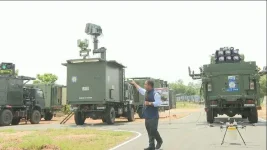- Views: 2K
- Replies: 14
French aerospace major Dassault Aviation has affirmed its readiness to collaborate with the Indian Air Force (IAF) to integrate indigenously developed weapons onto its Rafale fighter jets.
However, the company has clarified that it cannot provide access to the aircraft's critical source codes, citing proprietary ownership by its technology partners.
In a significant assurance for India's domestic defence industry, Dassault officials confirmed that there are no restrictions on the types or number of Indian weapons that can be fitted onto the Rafale.
This move aligns with New Delhi's "Make in India" initiative, which aims to enhance national self-reliance by equipping foreign military platforms with locally produced systems.
The Rafale's open architecture design is said to facilitate the integration of a variety of munitions, including future systems from the Defence Research and Development Organisation (DRDO), such as the advanced Astra beyond-visual-range air-to-air missile.
The primary point of contention, however, remains the access to the Rafale's source code. Access to these codes is crucial for true technological autonomy, as it would allow Indian engineers to independently modify, upgrade, and integrate systems without external assistance.
Dassault officials stated that the source code for the Rafale's sophisticated AESA (Active Electronically Scanned Array) radar, developed by European tech firm Thales, is proprietary technology. As the manufacturer of the aircraft, Dassault does not have the authority to share these protected codes.
This position presents a complex balance in the Indo-French defence partnership. While Dassault offers full support for joint integration projects, the denial of source code access means India remains dependent on the original equipment manufacturers for key software modifications.
This limitation could influence negotiations for future acquisitions, including the planned purchase of 26 Rafale Marine jets for the Indian Navy, a deal that was finalized in April 2025.
The development underscores a persistent challenge in international defence procurement, where nations seeking self-sufficiency must navigate the commercial and intellectual property rights of global defence corporations.
Indian defence officials will likely assess the long-term implications, potentially exploring alternative pathways such as negotiating directly with technology providers like Thales or investing further in indigenous capabilities to bridge the technology gap.




